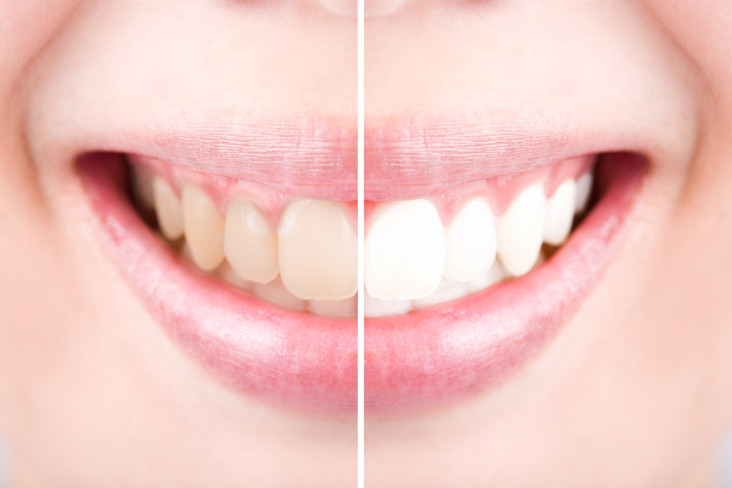A common desire for most dental patients is whiter and brighter teeth. How does one achieve this? From the beginning of time, and just slightly after people realized they had teeth, we have been inventing at home remedies for whiter teeth. Some of them have included things like ground-up coral, lemon juice, ashes, and baking soda, just to name a few. The common denominators in all of these are two things, abrasion and acidity.
For years, the tooth-whitening industry has taken a two-fold approach. First, the patient would have to remove the stain with an abrasive, then you would use a separate acidic product to whiten the tooth. This is not the case anymore.
The idea of the abrasive goes back to the days of the use of ground-up coral, ashes or baking soda. Anything that was abrasive and would be strong enough to remove both tartar and stain was the first line of defense for cleansing of teeth. The problem with this was that it also destroyed the teeth over time. You see, these dentifrices were also much harder than the tooth structure themselves. Over time, it would cause extreme wear on the teeth. This also includes baking soda. One should never use a toothpaste with baking soda including in it. It will cause wear on the teeth.
Over time, dentists and dental researchers found that we needed to find alternate “soaps” to cleanse the teeth. There are a variety that are available. None that are available today in commercially-produced toothpaste harm the teeth, this includes whitening toothpastes. Once the dental community had a handle on having a safe toothpaste, they needed to get a handle on whitening methods for teeth.
Since the beginning of time, people have been using various methods to whiten teeth. The aforementioned methods were working as an abrasive, but what about having a safe acid? This seems counter-intuitive, right, a safe acid? Well, it is not. Acids that are of too low of a pH will destroy your tooth enamel and leave you prone to tooth decay. Acids that are at an appropriate balance will leave you at a just the right mix.
In the beginning, people were using lemon juice or vinegar. These are way too acidic for tooth enamel. Over time they will “wash away” the enamel. Once again, dentists and dental scientists got on the task of developing a “safe acid”. This was one that could be placed on the teeth, not do too much damage, remove the stain and with a fluoride treatment, restore the weakened enamel from the whitening treatment. This was a big task at hand, but it had to be done. Too much damage was being done by “at-home” whiteners.
Over time the dental community developed carbamide peroxide. This is what we all know today as dental “bleach”. Over the last few decades, it has been used in several applications. Most often it was a stand-alone. Teeth would be cleaned with a high quality dentifrice at home and then used in an at-home bleaching tray for a set amount of time for a certain number of nights per week.
Then this expanded into in-office bleaching. A patient could come into the office, sit in the chair and have an approximately one-hour treatment done and the bleaching was done. This is a very viable treatment option, and probably the best treatment option, but it can be a little more expensive than what some people can afford. Dental chair time costs money, both to the dentist and their staff and therefore to the patient. This is the same with bleaching trays. Having bleaching trays made costs money though usually not as much as in office bleaching.
Whitening toothpastes is a much less costly alternative to professional whitening though it has its disadvantages. Its advantages are clear, it is low cost and easy to incorporate into your daily routine. However, whitening toothpastes work primarily via their abrasives to remove surface stains. This means that any deep staining is not reached. It also means that you are placing the enamel of the tooth at risk because the abrasives are stronger and thus the chance of you damaging your teeth are greater. Patients must weigh all these risks and benefits to decide which whitening method is the best for them.

